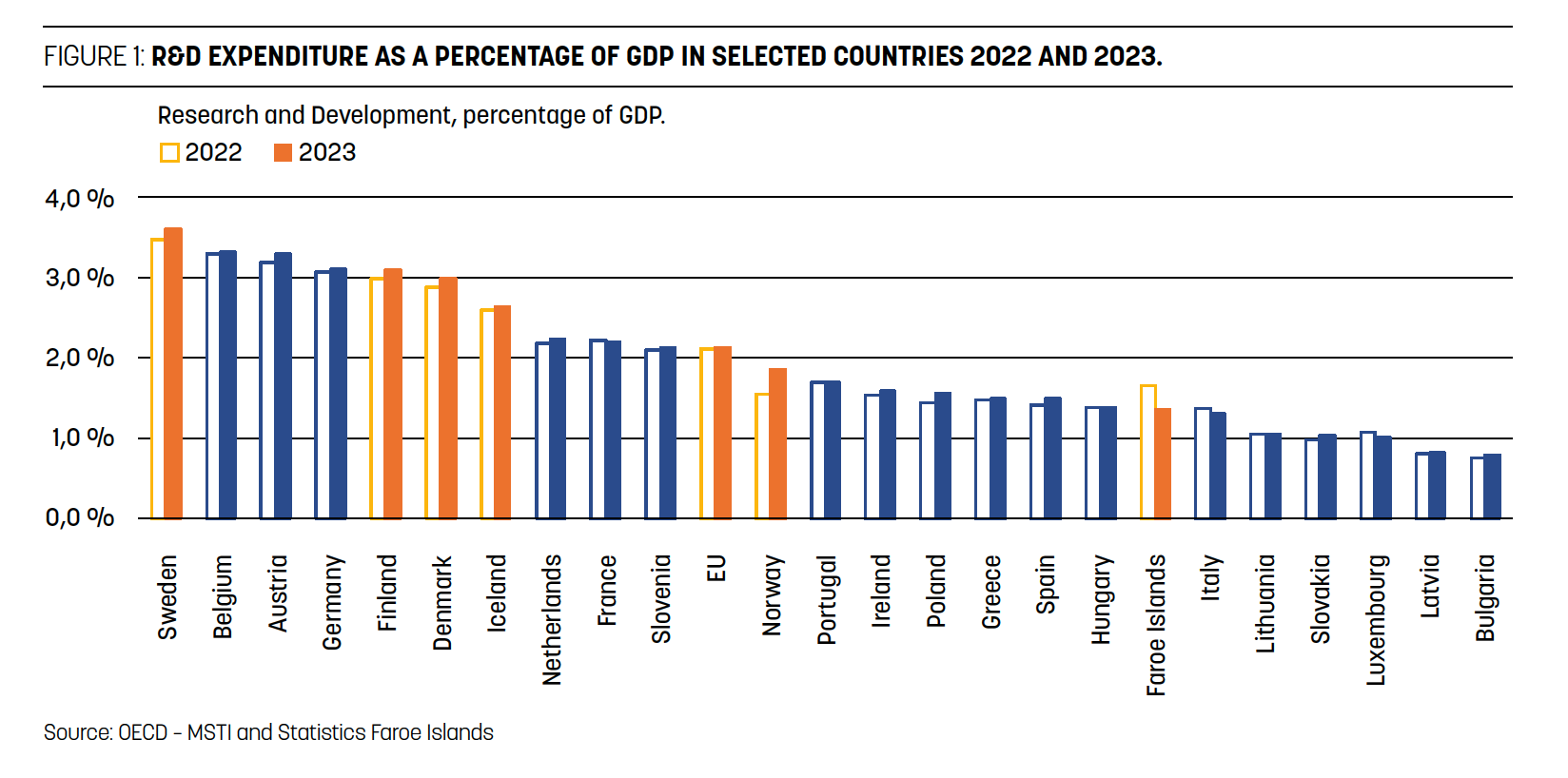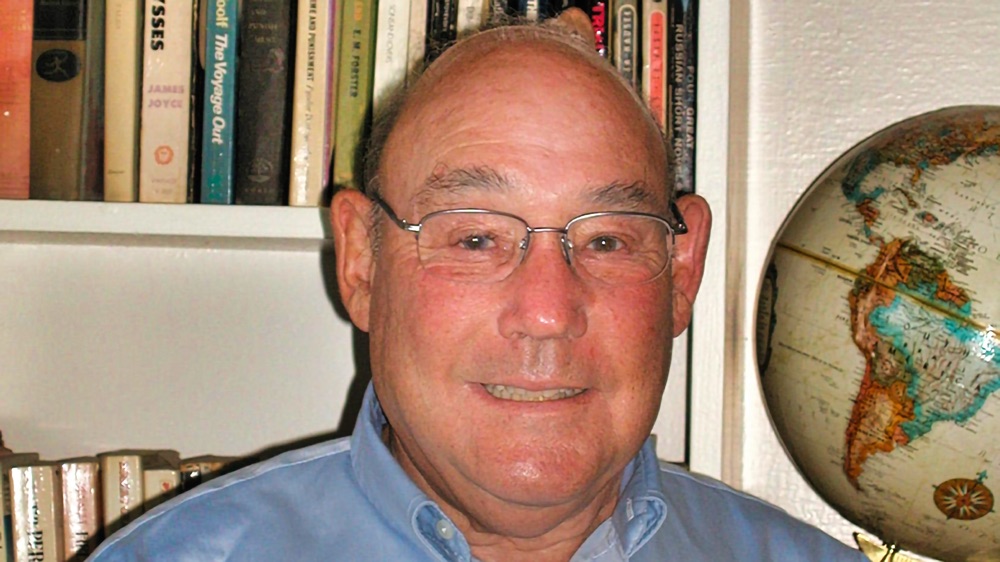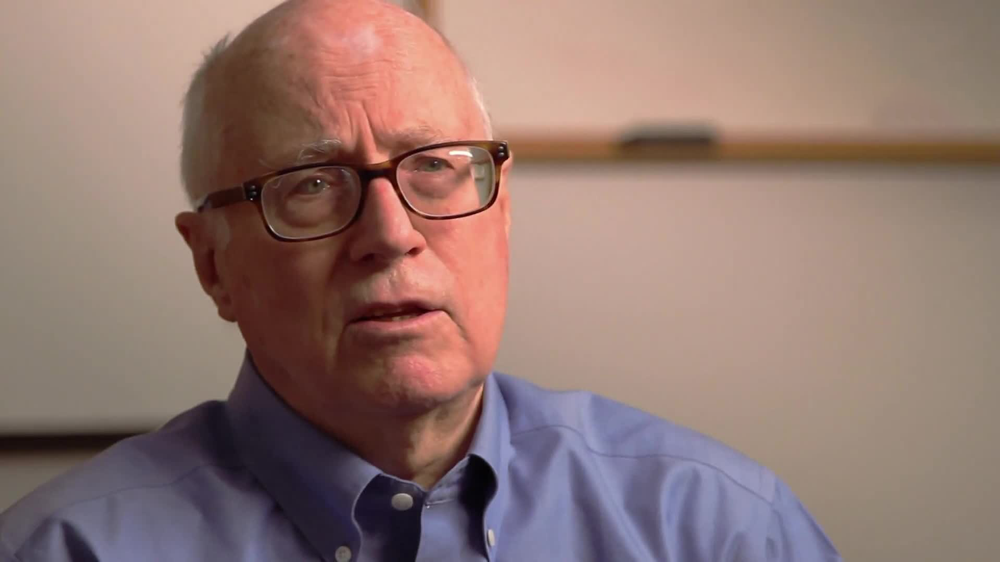– Tøft gjort av Oda å ta tak i dette, sier juryen om Smehs jobb. – Noe av det beste jeg har sett på TV på flere år, blir det sagt om Morgensterns jobb.
Month: november 2025
Smeh og Morgenstern deler på månedens jobb for september
– Tøft gjort av Oda å ta tak i dette, sier juryen om Smehs jobb. – Noe av det beste jeg har sett på TV på flere år, blir det sagt om Morgensterns jobb.
Fra i dag åpner Lovdata for fri bruk av lover og forskrifter i KI-verktøy
Nå kan alle bruke gjeldende lover og forskrifter fra Lovdata i sin egen KI-løsning. – Bare fantasien setter grenser for bruken, sier direktør Odd Storm-Paulsen. Advokat Eivind Arntsen mener dette er «årets bombe for juss og kunstig intelligens».
Soleklart flest John Deere i oktober
Dobbelt så mange som andreplassen, men fortsatt langt færre markedsandeler enn fjoråret.
Capsol leier ut karbonfangstanlegg

Capsol leier ut karbonfangstanlegg Sementprodusent skal teste løsningen det neste halvåret. redaksjonen Få tilgang med AB Pluss Vårt eksklusive innhold er tilgjengelig for abonnenter. Med AB Pluss får du tilgang til Cnytt.no, Avfallsbransjen.no, Hydrogen24.no og Biogassbransjen.no. Dette er innhold du ikke finner andre steder: Oppdaterte bransjenyheter, eksklusivt dybdeinnhold og en omfattende informasjonsbank. Vi tilbyr bedriftsmedlemsskap […]
Innlegget Capsol leier ut karbonfangstanlegg dukket først opp på Cnytt.no.
– Skap etterspørsel etter grønne produkter

– Skap etterspørsel etter grønne produkter Det hjelper ikke med flere støtteprogrammer for produksjon. Nå må etterspørselen stimuleres, krever europeisk industri. jens egil heftøy Få tilgang med AB Pluss Vårt eksklusive innhold er tilgjengelig for abonnenter. Med AB Pluss får du tilgang til Cnytt.no, Avfallsbransjen.no, Hydrogen24.no og Biogassbransjen.no. Dette er innhold du ikke finner andre […]
Innlegget – Skap etterspørsel etter grønne produkter dukket først opp på Cnytt.no.
Lovdata åpner gratis tilgang til norske lover for alle
Kan brukes til å bygge KI-tjenester og chatboter.
Sweden leads in R&D investments for the ninth consecutive year
New preliminary figures show increased research and development (R&D) investments in 2023 compared to 2022 as a percentage of gross domestic product (GDP) across all Nordic countries, except for the Faroe Islands.
Kristina Arge Simonsen, Statistics Faroe Island and Kaja Wendt, Statistics Norway

Sweden has maintained the highest investments in R&D as a percentage of GDP among the countries in figure 1 for the 9th year running.
Alongside Sweden, the R&D expenditure in Belgium, Austria, Germany, Finland, and Denmark have also met and exceeded the European Council´s goal of investing 3 percent of the national GDP in R&D. In 2022, only Sweden, Belgium, Austria and Germany had surpassed this threshold.
The first record of Sweden investing more than 3 percent of their GDP in R&D was in 1995, seven years before EU adopted the 3 percent target, which was set in 2002 in Barcelona. In 2019, Finland set a national goal to reach 4 percent of GDP invested in R&D by 2030.
Iceland leads growth in R&D expenditure
Figure 2 Growth rates in GDP & R&D among Nordic countries. PPP$ current prices. 2022–2023.

Iceland had the highest growth in R&D investments year over year in 2023, with an increase of 9.1 percent. In 2021 & 2022 its investments in R&D grew into the double digits. However,
Iceland’s growth rates in R&D have a more fluctuating pattern compared to Sweden, Denmark, Finland and Norway, likely due to its smaller population and smaller R&D community.
PPP$
Purchasing power parities (PPP) are currency conversion rates that aim to equalise the purchasing power of different currencies by eliminating price levels differences between countries. Here OECD is the data source, and PPP is linked to the US dollar.
In 2023 the Danish and Norwegian national GDP shrunk by -4.2 percent and -17.5 percent respectively. In Denmark, the expenditure growth in R&D stagnated year over year while Norway saw a decline of -1.4 percent year over year.
The Faroe Islands’ GDP had the highest growth at 6.7 percent, yet saw the largest drop in R&D investments.This change is mainly caused by the business enterprise sector, with its decline of more than 20 percent. As with Iceland, fluctuations in R&D investments in the Faroe Islands are expected due to its size of the population and the R&D community.
The GDP and R&D expenditure growth rates in Sweden and Finland follow similar trends, with R&D investments outpacing GDP growth rates.
Large fluctuations in Norwegian GDP trendline
Figures 3 and 4 show the trendline in GDP and R&D investments for the Nordic countries.
Norway’s GDP trendline shows significant fluctuations, with a notable drop for 2023. According to Statistics Norway the weak economic development for 2023 was due to increased prices, higher interest rates, reduced household demand, and falling prices for oil and gas.
Figure 3 Trendlines – GDP in Nordic countries. PPP$ current prices. 2014–2023.

Source: OECD
Sweden’s investments in R&D outpace other Nordic countries
While all Nordic countries have seen steady growth in the last few years, Sweden’s investments in R&D continue to grow at a faster rate than the rest, reinforcing its position as a frontrunner.
Figure 4 Trendlines – R&D expenditure measured in PPP$. Current prices. 2014–2023.

Combined R&D investments in the Nordics grew 6.4 percent over five years
Figure 5 Compound annual growth rates (CAGR) in GDP and R&D among Nordic countries. 2018–2023.

Source: OECD and Statistics Faroe Islands
Looking at the investments in R&D in the 5 year span from 2018 to 2023, all Nordic countries recorded a compound annual growth rate (CAGR) of more than +5 percent, with investments in Sweden, Denmark, Finland and Iceland outpacing GDP growth.
A compound annual growth rate (CAGR) is a way of measuring how much something grows, on average, per year, assuming the growth is compounded (reinvested) over time. The word “compound” refers to the process of growth building on previous growth. (Editor’s note)
Norway was the only country where the GDP has a higher CAGR than the national investments in R&D.
The year over year growth rates in R&D investments from 2022-2023 were lower than the 5 year CAGR across all Nordic countries, indicating a slower investment rate in R&D.
Figure 6 R&D expenditure growth rates among Nordic countries. 2022–2023.

Driving Sectors
The business enterprise sector is the primary R&D performer in the Nordic countries, representing 69.6 percent of the total investments in R&D in 2023. Higher education accounts for 19.7 percent and the government sector for 11.6 percent. Private non-profit organisations account for 0.1 percent.
Figur 7 R&D expenditure in the Nordic countries by R&D performing sector. 2023.

Iceland and Sweden had the highest concentration of R&D performance in the business enterprise sectoramong the Nordic countries. Over 74 percent of R&D was performed here in 2023. 26 percent was performed in government or higher education sectors.
The government and higher education sectors in Norway are responsible for 43 percent of the R&D in Norway, having the highest R&D performance concentration in the public sectors combined in the Nordic countries.
Denmark had the highest share of R&D performed in the higher education sector, representing 35 percent of the total national R&D activity. In Denmark, the size of the sector is influenced by merging of sectorial research institutes with universities back in 2007.
Overall, the business enterprise sector is responsible for about two-thirds of the R&D performance across nearly all countries, aligning with goal established in Barcelona by the EU commission in 2002. Norway is an exception, with less than 57 percent of R&D conducted in the business enterprise sector.
Foto: Government offices, Torshavn. Photo: Nicolas Vera-Ortiz
The post Sweden leads in R&D investments for the ninth consecutive year appeared first on Forskningspolitikk.
Dødsfall og overgrep – slår alarm om svikt i svenske hjemmetjenester
Svikt i hjemmetjenestene i Sverige skal ha ført til minst tolv dødsfall, melder SVT.
Svensk AI-startup henter 18 millioner etter hackathon-seier
AI-agent-gründere fikk investering fra Lovable.
Remembering Three Giants of Innovation Economics
This past spring marked the passing of three towering figures in the economics of innovation: Richard “Dick” Nelson, J. Stanley Metcalfe, and Frederic M. Scherer. Their deaths close a chapter in the history of a field they helped to create and define. Their influence on science and technology policy has been profound.
Mark Knell, Research Professor NIFU
Each reshaped how economists think about technological change, competition, and policy. Nelson gave us an evolutionary framework for understanding innovation, Metcalfe deepened and institutionalized it in Europe, and Scherer anchored it in the rigorous tradition of industrial organization. Together they built the foundations of innovation economics as we know it today, leaving behind ideas and institutions that continue to guide both scholarship and policy.
Richard R. Nelson (4 May 1930 – 28 January 2025)
Richard R. Nelson transformed the study of innovation into a central concern of economics. His early work at the National Bureau of Economic Research in the 1950s placed R&D and science at the heart of growth analysis. In The Simple Economics of Basic Scientific Research (1959), he showed that basic science yields large social returns but limited private ones, providing the rationale for strong public support. This laid the foundations for the economics of science and technology policy.

His most influential work came with Sidney G. Winter in An Evolutionary Theory of Economic Change(1982). The book rejected neoclassical models of perfectly rational firms. Instead, Nelson and Winter argued that firms operate through routines – regular patterns of behaviour that act as the economic analogue of genes. Firms adapt under bounded rationality, experimenting, imitating, and learning by doing.
Drawing on Darwin, they showed how industries evolve through variety and selection, producing persistent heterogeneity and path-dependent technological trajectories. Their simulation models demonstrated how entry, exit, and diffusion could drive productivity growth without equilibrium assumptions. The book launched evolutionary economics as a coherent research programme across economics, management, and innovation studies.
Nelson extended this framework to the institutional and national level. In National Innovation Systems(1993), he showed how firms, universities, governments, and culture shape innovative capacity. Later works – The Sources of Economic Growth (1996), Technology, Institutions, and Economic Growth (2005), and Modern Evolutionary Economics: An Overview (2018) – developed a vision of economic change as the co-evolution of technologies, organizations, and institutions.
In essays on the “scientific commons,” Nelson defended the openness of science, warning that excessive privatization of knowledge threatened cumulative learning and long-run growth. He urged policymakers to protect diffusion, openness, and variety as essential conditions for innovation. His later writings highlighted the risks of inequality and short-termism, stressing that innovation is always a social and institutional process.
Nelson’s work remains foundational for innovation studies, offering an evolutionary and historically grounded economics that continues to inspire.
J. Stanley Metcalfe (20 March 1946 – 15 March 2025)
J. Stanley Metcalfe was central in advancing evolutionary economics in the United Kingdom and Europe. Educated at the University of Liverpool and long based at the University of Manchester, he built a vibrant centre for research on industrial change and innovation. His scholarship emphasized firm diversity, the experimental character of markets, and the open-ended nature of technological advance.

Metcalfe’s most important book, Evolutionary Economics and Creative Destruction (1998), revisited Schumpeter’s insights through an evolutionary lens. Innovation, he argued, transforms industries not through smooth adjustment but through variety, competition, and selection. The book remains a landmark statement of evolutionary thinking and its policy relevance.
Earlier collaborations with Ian Steedman brought evolutionary perspectives into international trade, showing that comparative advantage is shaped by innovation and learning rather than fixed endowments. He also contributed to research on technological diffusion, emphasizing how adoption depends on firm strategies, networks, and institutional environments.
Metcalfe was an institution builder as well as a scholar. He helped shape the UK’s Economic and Social Research Council programmes on competition and innovation, embedding evolutionary perspectives in policy debates. As founding editor of the Journal of Evolutionary Economics, he gave the field an international platform. His policy stance was clear: governments should support variety, experimentation, and adaptive learning, not preserve incumbent structures.
Metcalfe advanced evolutionary economics as both theory and policy, leaving a legacy that continues to shape research and public debate.
Frederic M. Scherer (1 August 1932 – 25 May 2025)
Frederic M. Scherer was one of the foremost scholars of industrial organization and innovation. His widely used textbook Industrial Market Structure and Economic Performance (1970) trained generations of economists and remains a standard reference.

Scherer’s research clarified the relationship between market structure and innovation. He showed that while competition often stimulates innovative activity, some market power is needed to sustain costly R&D. His empirical work on patents and appropriability regimes provided systematic evidence on how intellectual property shapes incentives and technological progress.
Beyond academia, Scherer contributed directly to policy. He advised US government agencies, worked on antitrust enforcement, and engaged in international debates on patent reform. He consistently argued that industrial economics should inform both scholarship and public decision-making.
Scherer deepened understanding of how competition drives innovation, combining rigor with relevance in ways that still guide the field.
Together
Nelson, Metcalfe, and Scherer built complementary traditions in innovation economics. Nelson created the evolutionary framework, Metcalfe advanced and institutionalized it in Europe, and Scherer grounded innovation studies in industrial organization. Each linked theory with policy and evidence, ensuring that innovation became central to economics. Their passing marks the end of an era, yet their legacies endure – shaping how we understand technological change and leaving a lasting imprint of intellect and curiosity.
Top illustration: Getty
The post Remembering Three Giants of Innovation Economics appeared first on Forskningspolitikk.